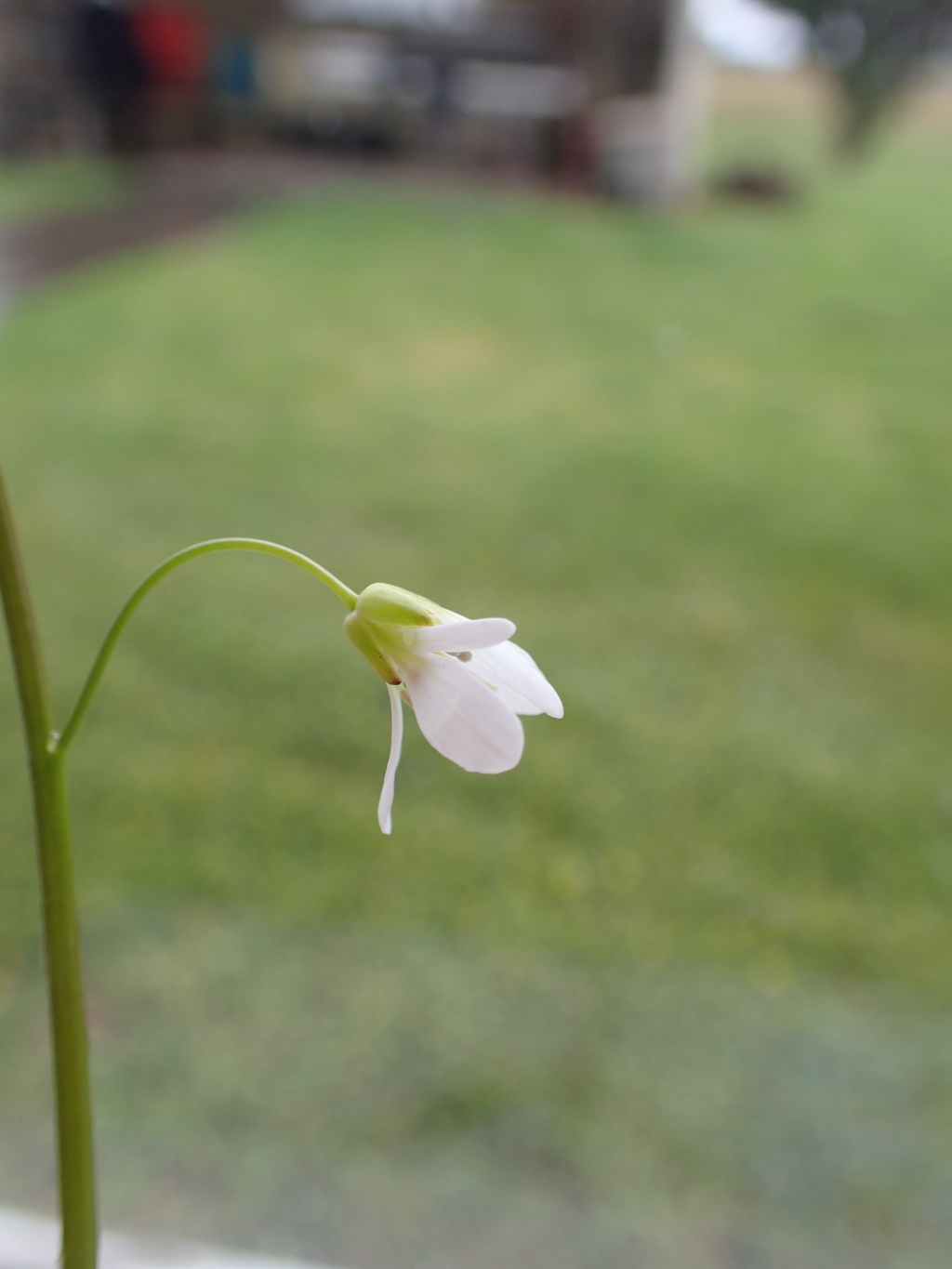Cardamine tenuifolia
Hook. Slender Bitter-cressElongate, glabrous perennial, to 50 cm or more high, often with numerous fine fibrous roots arising from lower stems; stems weak, trailing. Leaves predominantly cauline and more than 6, to 6 cm long (lower leaves not persisting), pinnate with 1–5 pairs of lateral pinnae, terminal and lateral pinnae filiform. Racemes lax; sepals 2.5–4(–5) mm long; petals (5–)7–12 mm long, white; mature style mostly 2–4 mm long. Fruits erecto-patent to spreading, 20–40 mm long, c. 1.5 mm wide; pedicels to 30 mm long; seeds c. 1.5 mm long. Flowers late spring–summer.
LoM, Wim, GleP, Brid, VVP, VRiv, RobP, MuF, GipP, OtP, WaP, Gold, CVU, GGr, DunT, EGL, EGU, HSF, HNF, OtR, Strz, MonT, VAlp. Also SA, NSW, Tas. Scattered across southern Victoria in swamps or streams.
Distinctive by virtue of its large flowers and lax, elongate habit. There have been few recent collections of this species suggesting that it may be threatened in Victoria.
Cardamine pratensis, of Northern Hemisphere origin, was collected from the Ballarat district in the nineteenth century and if re-collected, may key out with C. tenuifolia. It differs mostly by being more robust and erect and by forming a basal rosette of leaves.
Thompson, I.R. (1996). Cardamine. In: Walsh, N.G.; Entwisle, T.J., Flora of Victoria Vol. 3, Dicotyledons Winteraceae to Myrtaceae, pp. 434–442. Inkata Press, Melbourne.
 Spinning
Spinning


